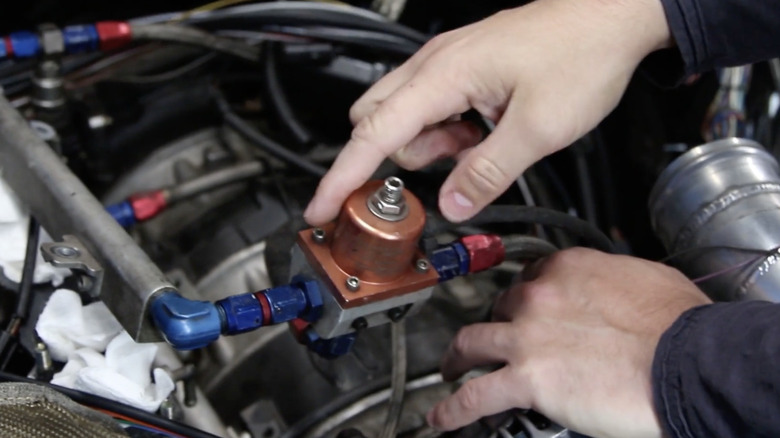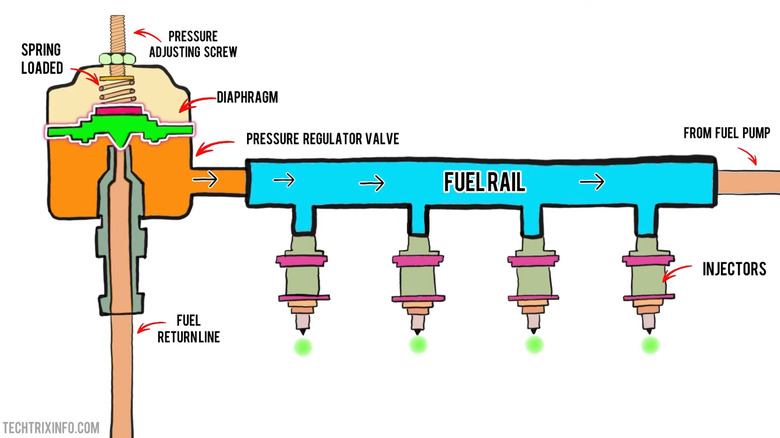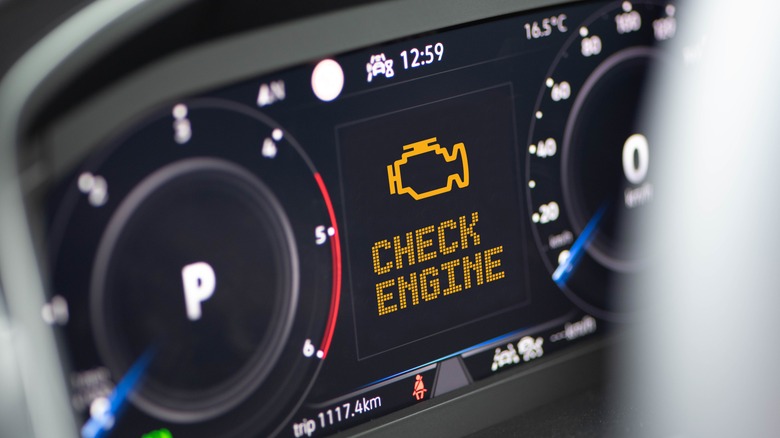What Is A Fuel Pressure Regulator & What Happens When It Goes Bad?
Your car's engine needs a very specific diet of air and fuel to do its job, and it's the fuel pressure regulator's (FPR) job to feed it the right amount. The gadget is relatively tiny and can fit in the palm of your hand, but it's still a crucial component in any modern electronic fuel injection (EFI) system. Its whole purpose is to maintain a consistent flow of fuel to the injectors. The engine's needs can vary greatly between when you're cruising down the highway or idling at a red light, and that's where the regulator comes in to adjust the fuel supply accordingly.
Without it, fuel will either pass through the system without becoming properly pressurized or the pump will inject too much fuel and cause the injectors to malfunction. Recognizing this is just one part of learning the symptoms to check for when diagnosing fuel pump problems. Another reason a balanced flow is important is that your car's computer relies on it to make its calculations. If that's off, your engine's performance goes right out the window.
How a fuel pressure regulator works
As for how it actually does its job, there are two ways, depending on what you're driving. On older cars with a mechanical regulator, it functions like a reactive valve. The device contains a spring that is constantly trying to push a valve closed to build up fuel pressure. Working against it is the engine's vacuum, which tries to pull that same valve open to release the pressure.
At idle, the engine's suction is powerful. It overpowers the spring and pulls the valve open, letting surplus fuel bleed off and keeping the pressure low. But when you accelerate, that suction all but disappears. The spring, facing no resistance, instantly takes over and pushes the valve shut. This traps fuel and makes the pressure climb rapidly. This constant contest ensures the fuel pressure matches the engine's power requirements.
Your shiny new ride, however, probably does things differently. Most modern vehicles use what's called a returnless fuel system, which ditches the external, vacuum-operated part. These smarter systems are often electronic. Instead of a mechanical valve reacting to vacuum changes, they use a control module that directly manages the fuel pump's speed to maintain the desired pressure. Some designs go even further and integrate the regulator directly into the fuel pump assembly inside the gas tank. Overall, it's a more efficient and streamlined approach.
What happens when it goes bad?
When an FPR starts to fail, your car will definitely let you know. The symptoms can range from annoying to downright dangerous. One of the most obvious signs is a noticeable drop in engine performance. A faulty regulator can cause the perfect air-fuel ratio to get all messed up, leading to issues like engine misfires, a rough idle, stalling, and sluggish acceleration. You might also notice your car is guzzling too much gas, as a bad regulator can force the engine to work harder and burn more fuel.
Another major red flag is the smell or sight of fuel where it shouldn't be. A common failure is a ruptured internal diaphragm, which allows fuel to leak into the vacuum line. You might also spot fuel leaks around the regulator itself, which is a serious safety hazard. If the engine is running too rich (getting too much fuel), you could see thick black smoke pouring out of your exhaust. In some cases, the engine may crank but refuse to start at all. Your car's computer will almost certainly detect these performance problems and trigger the check engine light.


